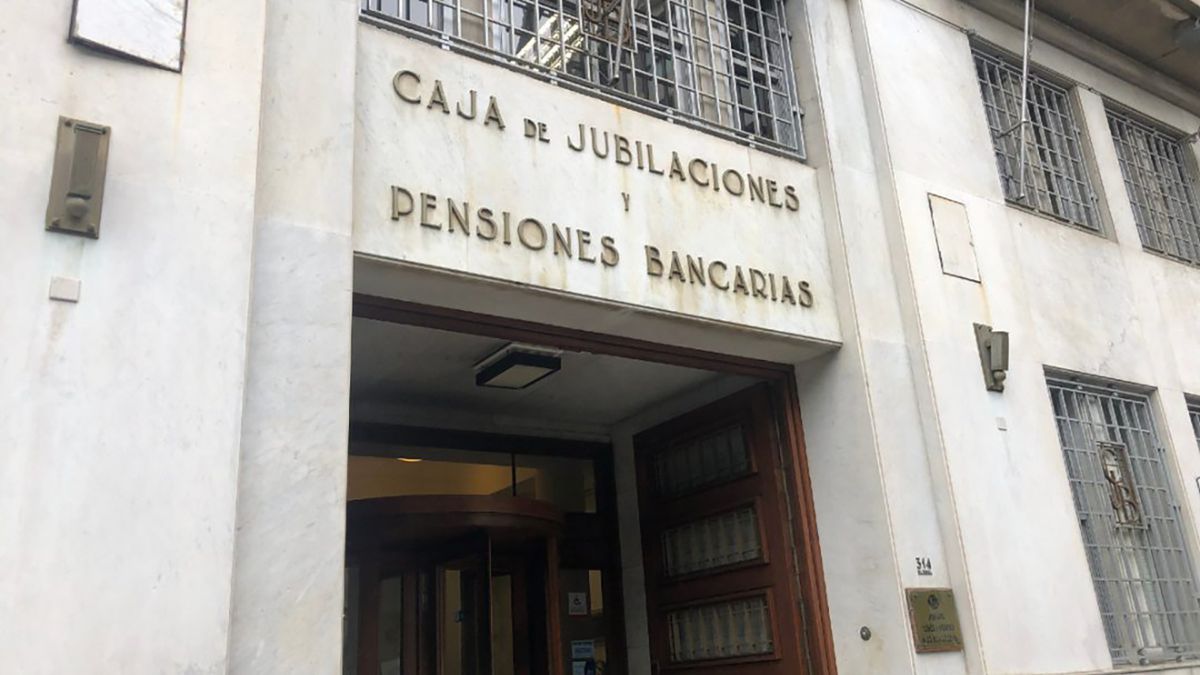The Bank Retirement and Pension Fund (CJPB) His days are numbered due to the serious situation of unsustainability financial it faces, a scenario that was already foreseen among the government authorities since at least February, when the social security reform in Uruguay was still being debated Parliament. Some keys to understand the critical scenario that the entity is going through.
A situation that “comes from years”
The crisis in the bank account was whitewashed by the minister of Labor and Social Security (MTSS), Pablo Mieres, at the end of February, when the sustainability of the pension system —with a view to the possibility of establishing a comprehensive system— was the main issue on the discussion table of the government and society.
At that time, Mieres pointed out that the situation was “in a very serious trend”, but he rescued a optimistic view: “We are going to find a way to get ahead”. Something that, for the moment, is still far from happening.
Comparing with the also critical state of the Professional Fund, the head of the MTSS remarked that the Funds “do not arrive” in these states from one day to the next” and that that “comes from years” but “it is recognized now”. Likewise, he pointed out that the government had not been informed about the crisis in the Caja Bancaria, nor about the fact that “these problems were incubating.”
The last quarter of the year, the deadline
Also the Association of Bank Employees of Uruguay (AEBU) recently referred to this problem at the Caja Bancaria, which is located in a committed situation”. According to the bank workers, represented by the general secretary Fernando Gambera, If an agreement is not reached with the companies and the State, the entity would run out of money to face the last quarter of the year. In other words, he only has four months left, at best.
When analyzing the origin of the conflict, the AEBU referent maintained that there were multiple variables to reach this situation, including the exchange rate and the pandemic, which led to the loss of more than 2,300 jobs. To this was added the fact that the Executive decided not to replace the vacancies.
On the other hand, Gambera focused on the fact that today “people retire faster and younger”. In this sense, he pointed out that until last year the average age for retirement was about 61 years and now it is being 60. “As they leave the job market before, you have to start paying those pensions before,” he observed. .
By way of conclusion, he indicated that the negotiation “must have the premise that we all put at the same time” and asked that the State make “a third of the effort, a third of the companies and a third of the workers and retirees” to overcome this situation and achieve a healthy economy.
In February, the AEBU had proposed using Law 18,396 of the bank retirement and pension system as a transitory and short-term solution —as long as it proposes a complementary employer benefit that is currently not applied in its entirety—; but the government “rejected” this path and sought to solve it with a bill that advances changes incorporated into the social security reformaccording to the bankers —something that, in the end, did not happen either.
In search of “collective and global” negotiation
Another body involved in the urgency to solve the red accounts of the Caja Bancaria is the Association of Private Banks of Uruguay (ABPU). According to the group, the CJBP is “with water up to its neck”, so the government must seek a solution to this “urgent” problem that is “condemning” the banking sector to “a very complex future”as well as “seriously compromising the viability” of it.
According to the ABPU, banks make employer contributions of 25.25% to which must be added the Employer Complementary Benefit (PCP) for a similar amount. In the general scheme the contributions are 7.5%. In this sense, private banks maintain that banks contribute 6 times more than the rest of the companies do, contributing with most of the financing of the Caja Bancaria. They assure that in 2022, of every 100 pesos collected in private banks, some 73 pesos went to contribution.
Increasing the tax burden is not, however, an option; Therefore, the situation is the exclusive responsibility of the actors involved, the ABPU itself, the government and the AEBU, who make up the Banking Fund Working Group.
The reasons behind the crisis
According to the APBU, the serious situation of the Caja Bancaria was foreseeable since it is a pay-as-you-go regime with more liabilities than assetswhich has “well above average” passivities, added to the “growing life expectancy of our group.”
Likewise, they maintain that “the magnitude of the funds required to rescue the CJPB is such that “it is not easy to reach an agreement for its financing”, and “there is no margin for gradual reforms”, since, “the longer it takes, more painful will be the measures to adopt”.
However, and unlike those proposed by the AEBU, for private banks the PCP is not the solution as long as taxes the credits; therefore, an increase in it “would lead to an increase in the cost of credit to the population, something that would be unfair,” they stress.
Another problem is in the labor system himself, too rigid to current needs. In this context, the APBU states that there has been an attack against the generation of employment and meritocracy in private banking, demotivating those who make the most effort, because a large part of the compensation is linked to the mere passage of time”. “There is no sustainable Banking Fund if there is no viable financial sector”they remark.
Source: Ambito




